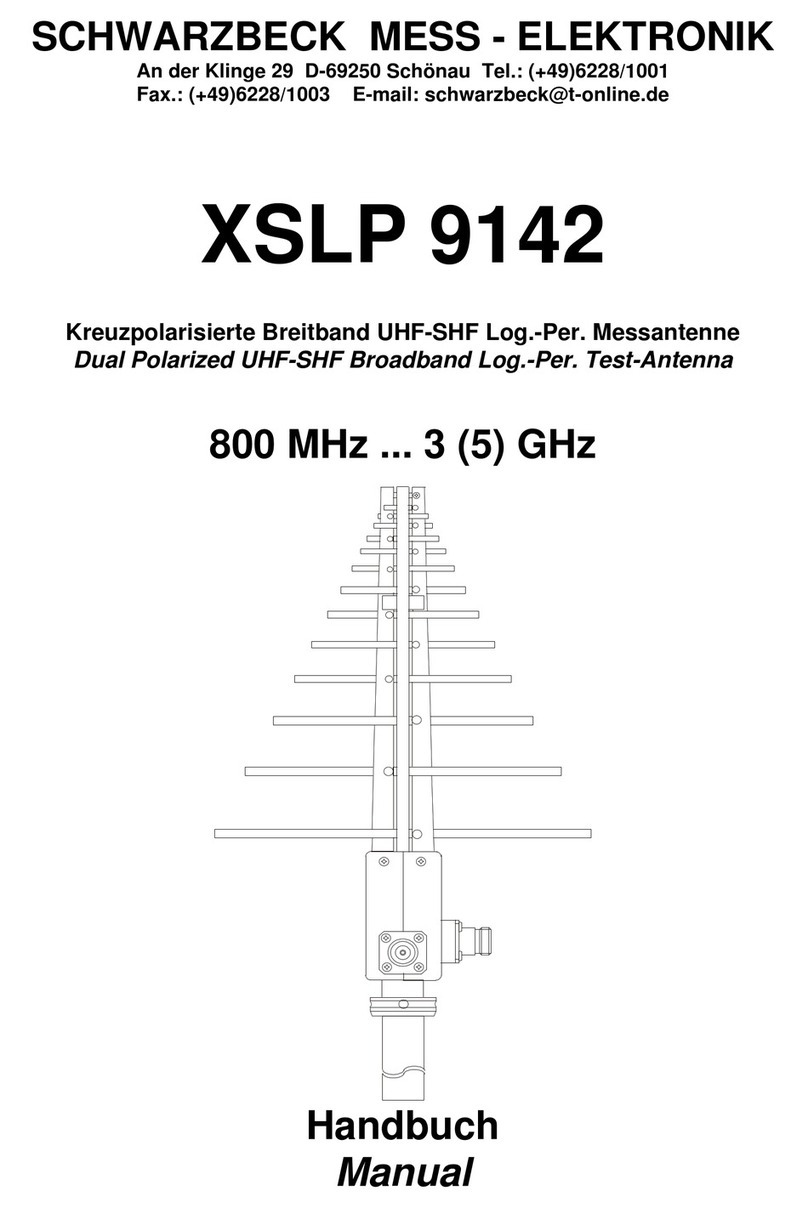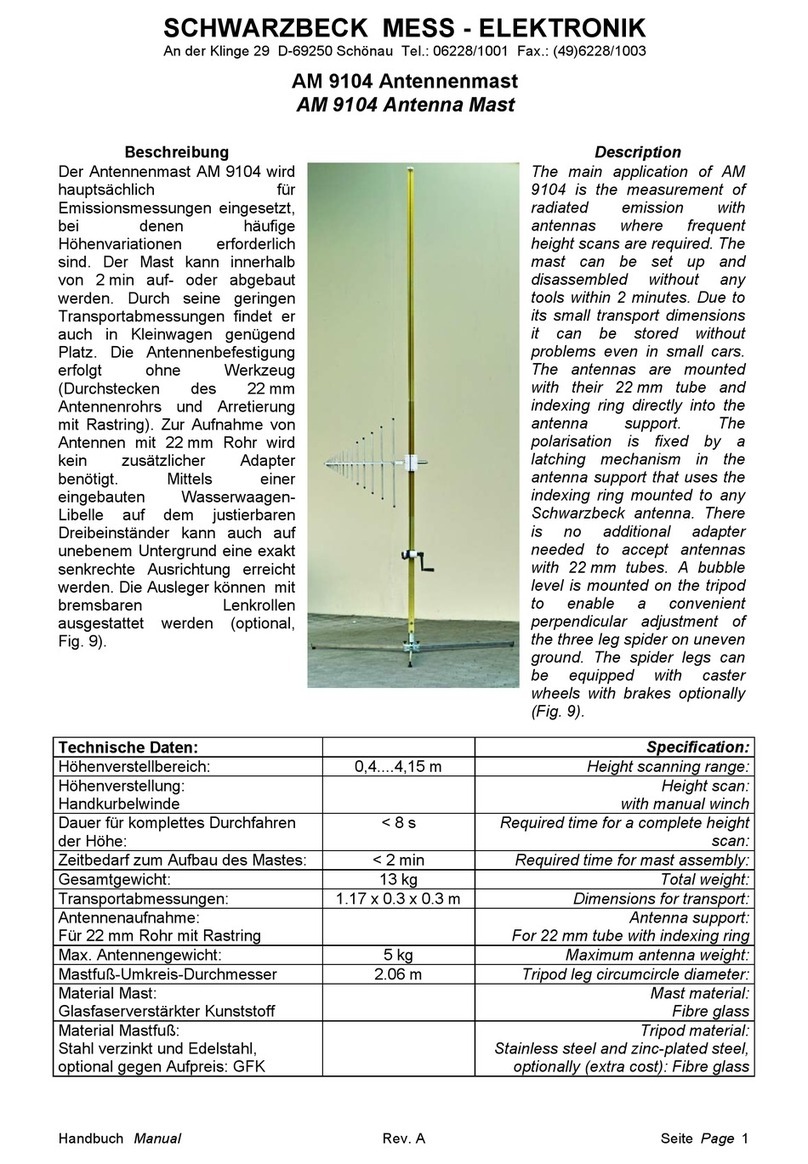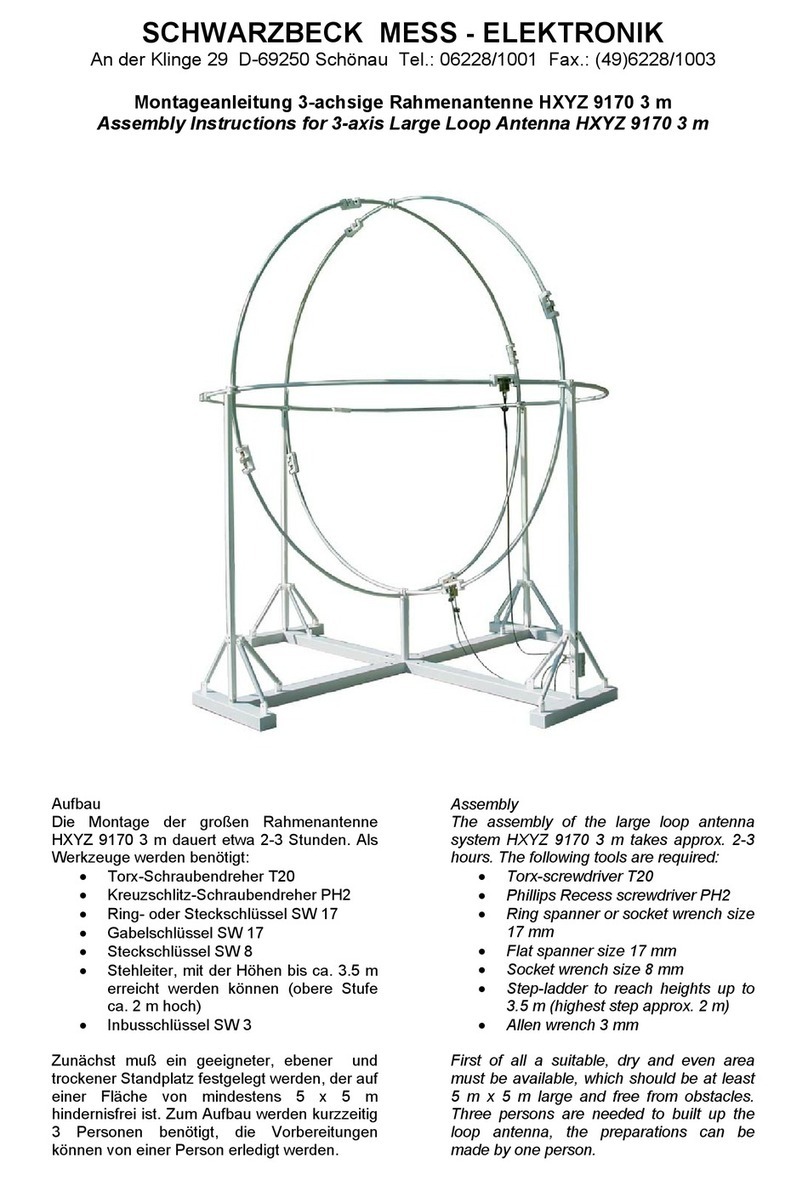
Handbuch Manual VAMP 9243 Seite Page 7
Da Sinusstörer bei allen 3 Detektoren
(von Rauscheinflüssen abgesehen) die
gleiche Anzeige ergeben, können diese
mit dem rauscharmen Average / Mittel-
wert-Detektor gemessen werden.
Die Pulsgrenzwerte werden mit dem vor-
geschriebenen CISPR-Quasipeak- oder
Peak / Spitzenwert-Detektor gemessen.
Natürlich sind diese "Tricks" nur dann
wichtig, wenn die Grenzwerte sehr nahe
an den Rauschsockel herankommen.
7.4 Die obigen Betrachtungen gelten
für den Betrieb der Monopolantenne
an einem empfindlichen Störmeßemp-
fänger (Schwarzbeck FCKL 1528).
Wenn ein Empfänger bei Einstellung
auf höchste Empfindlichkeit keinen
Rauschanstieg zeigt, wenn er mit der
VAMP 9243 verbunden wird, dann
kann er deren Dynamikumfang nicht
ausnutzen.
Weniger geeignete Empfänger oder
Spektrum-Analysatoren ohne Vorver-
stärkung und Vorselektion liegen im
Rauschen oft so hoch, daß sie das
Rauschverhalten allein bestimmen.
Auch die ausgezeichneten Rausch-
und Verstärkungseigenschaften der
VAMP 9243 können daran nichts än-
dern. Zu beachten ist, daß das Grund-
rauschen wegen der großen Empfind-
lichkeit der VAMP 9243 nur in guten
Abschirmkammern bestimmt werden
kann, weil sonst nur ein Grundstörpe-
gel gemessen wird.
Es ist ratsam, den Grundpegel mit der
Mithörkontrolle (Lautsprecher) des
Empfängers daraufhin zu überprüfen.
Reicht die Empfindlichkeit eines Emp-
fängers oder Spektrum Analysators nicht
aus, um das Grundrauschen der
VAMP 9243 anzuzeigen, kann ein ent-
sprechend empfindlicher Vorverstärker
zwischengeschaltet werden, wenn ent-
sprechend schwache Feldstärken ge-
messen werden müssen.
Dabei muß beachtet werden, daß damit
für hohe Feldstärken die Übersteue-
rungsgefahr steigt.
Because of the fact that sine wave sig-
nals give the same reading with all three
detectors, they can be measured with
the low noise average detector.
The limits for pulse spectrum are meas-
ured with Peak- or CISPR-Quasipeak
according to the standards.
Obviously these "tricks" are only impor-
tant, if limits are very close to the noise
floor.
7.4 The above considerations are only
valid for the combination of the mo-
nopole antenna and a high quality,
high sensitivity emi-receiver
(Schwarzbeck FCKL 1528).
A receiver which does not show a
higher noise reading when connected
to the VAMP 9243 cannot use the dy-
namic range.
Low quality, low sensitivity receivers
or spectrum analysers without selec-
tive preamplifiers (preselectors with
low distortion amplification) will
completely determine the noise char-
acteristics.
Even the outstanding noise and am-
plification characteristics of the VAMP
9243 cannot improve this.
The basic internal noise of the VAMP
9243 is so low that it can only be de-
termined in perfectly shielded rooms.
Otherwise parasitic signals will be
misinterpreted as basic noise.
It is good practice to use the receiver's
audio (loudspeaker) to detect the kind
of signal.
If the sensitivity of a receiver or spectrum
analyser is to poor to indicate the internal
noise of the VAMP 9243, a sensitive
preamplifier at the receiver's input will
improve the situation, when low field-
strength measurement is a must.
It has to be mentioned that overload
(intermodulation) problems with high
fieldstrength may occur.
































